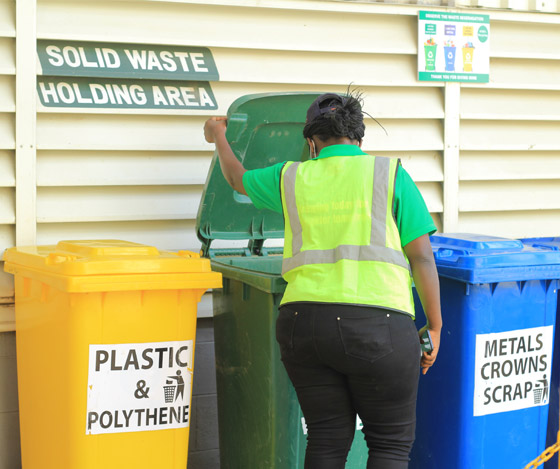DRIVING SUSTAINABLE PACKAGING
Our goal: 100% of our products will be in primary packaging that is returnable or made from majority recycled content by 2025.
Responsibility for our product goes far beyond the last sip. We’re constantly looking for ways to increase the recycled materials in our packaging, to increase recycling rates through the recovery and reuse of materials, to reduce the amount of material we use in our packaging, and to educate consumers on the importance of recycling.
Our Approach
Attaining Zero Waste Operations
Our breweries are on a path of attaining 100% recycling rate and eliminating onsite waste generation through reducing resource use, recycling and reusing materials where possible. So far, our average recycling rate for Jinja and Mbarara breweries stands at 95%.
We use the Integrated Co-products and waste management procedure to minimise total coproducts and waste generation across our facilities, increase recyclability rates and improve by product revenue, while ensuring regulatory compliance. Waste from our operations is segregated at source, and sorted before disposal while following the appropriate co-product/waste disposal guidelines. The contributors of recycled content include gunny bags, card boxes, jerricans, buckets, and plastics that are reused and sold to generate byproduct revenue.

Reduce the Material
We aim for fewer and simpler materials, to improve resource efficiency and aid recycling.
We lightweight the design, using thinner walled bottles or cans to reduce materials, costs, energy and GHG emissions.
We print onto the pack instead of applying a label, reducing printing costs as well as improving recyclability.
We then ensure the design simplifies recycling and use materials that are recyclable and recycled to avoid multiple materials, laminates and dark colours which are difficult to sort, separate and recycle.
Recyclability
Recover for reuse
We set up systems to recover primary, secondary and transit packaging for your own reuse, or as part of a sector collaboration? There are systems for beer kegs and returnable bottles, and now there is a solution for e-commerce delivery packaging.
Provide Feedback
We encourage recycling and recovery, by providing clear information about the packaging materials, and the options for end-of-use recovery or recycling.
- Is your packaging future-fit?
- Is it making a positive contribution to society and nature, and meeting your customer’s needs: in delivery, in use and at end of use?
- Can you rethink, reduce or recover it for reuse? If not, how best can you design it for zero waste, and make sure it becomes a feedstock for new packaging, or high-quality compost?
Circular economy and ‘zero waste’ approaches can help you improve the sustainability, the user experience, and save money.